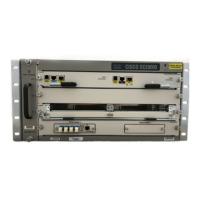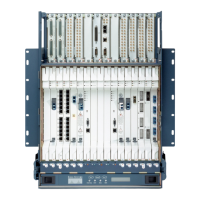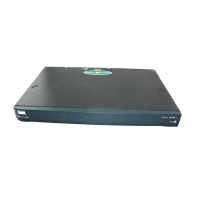6-9
Cisco SCE8000 Software Configuration Guide
OL-16479-02
Chapter 6 Configuring the Line Interface
Configuring Traffic Rules and Counters
It should be noted that using traffic rules and counters does not affect performance. It is possible to
define the maximum number of both traffic rules and counters without causing any degradation in the
SCE platform performance.
Traffic Rules
A traffic rule specifies that a defined action should be taken on packets processed by the SCE Platform
that meet certain criteria. The maximum number of rules for the Cisco SCE8000 is 64, which includes
not only traffic rules configured via the SCE platform CLI, but also any additional rules configured by
external management systems, such as SCA BB. Each rule is given a name when it is defined, which is
then used when referring to the rule.
Packets are selected according to user-defined criteria, which may be any combination of the following:
• IP address — A single address or a subnet range can be specified for each of the line ports
(Subscriber / Network).
• Protocol — TCP/UDP/ICMP/IGRP/EIGRP/IS-IS/OSPF/Other
• TCP/UDP Ports — A single port or a port range can be specified for each of the line ports
(Subscriber / Network). Valid for the TCP/UDP protocols only.
• Direction (Upstream/Downstream) (TCP only).
The possible actions are:
• Count the packet by a specific traffic counter
• Block the packet (do not pass it to the other side)
• Ignore the packet (do not provide service for this packet — No bandwidth metering, transaction
reporting etc. is done)
• Quick-forward the packet with service — forward delay-sensitive packets through the fast path
while maintaining serviceability for these packets
• Quick-forward the packet with no service (quick-forwarding-ignore)— forward delay-sensitive
packets through the fast path with no service provided for these packets
Block and Ignore actions affect only packets that are not part of an existing flow.
Note Block and Ignore are mutually exclusive. However, blocked or ignored packets can also be counted.
It is possible for a single packet to match more that one rule (The simplest way to cause this is to
configure two identical rules with different names). When this happens, the system operates as follows:
• Any counter counts a specific packet only once. This means that:
–
If two rules specify that the packet should be counted by the same counter, it is counted only
once.
–
If two rules specify that the packet should be counted by different counters, it is counted twice,
once by each counter.
• Block takes precedence over Ignore — If one rule specifies Block, and another rule specifies
Ignore, the packet is blocked.

